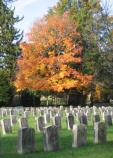Joe W. Kittinger became the first person to cross the Atlantic in a hot-air balloon. He left Caribou, Maine, on September 14, 1984, and landed near Capbreton, France, on September 17, 1984. He broke his ankle when he was thrown from the gondola during the stormy landing. The 3,535-mile trip also established a new record for solo distance. Children could view a timeline of hot-air balloon flights at: Hot-Air Balloon Flights.
World Manta Day is today! Manta rays live in tropical or sub-tropical waters. They feed on large quantities of zooplankton by swimming with their mouths open. The giant manta (Mobula birostris) lives in more open ocean waters and can have a wing span of 23 feet. The reef manta (Mobula alfredi) can have a wing span of up to 18 feet. Both are listed as vulnerable by the IUCN. Interesting fact: mantas visit cleaning stations where cleaner fish remove parasites from the mantas’ skins.
Constitutional Convention unanimously approved the Constitution in 1787 in Philadelphia, Pennsylvania. Almost all of the 42 delegates signed the document. It then had to be ratified by nine of the thirteen states. Children could find some very interesting questions about the members of the Convention at: Archive
Today is also Constitution Day, when school children across the country learn about the Constitution and its signers. A wonderful book about the signers is Dennis Brindell Fradin’s The Founders: The 39 Stories Behind the U. S. Constitution. Children could also visit http://www.constitutionday.cc/. There they could take a quiz and construct a poster.
 Citizenship Day recognizes all new citizens. Presidential Proclamation has acknowledged this day since 1952. Over a million immigrants a year become United States citizens. Idea: Children could interview someone who has become a United States citizen. How does someone become a citizen? They could follow a simple flow chart at: http://www.uscis.gov/citizenship/learners/apply-citizenship.
Citizenship Day recognizes all new citizens. Presidential Proclamation has acknowledged this day since 1952. Over a million immigrants a year become United States citizens. Idea: Children could interview someone who has become a United States citizen. How does someone become a citizen? They could follow a simple flow chart at: http://www.uscis.gov/citizenship/learners/apply-citizenship.

Antietam National Cemetery
Battle of Antietam occurred in 1862. This Civil War battle was called America’s bloodiest day because over 25,000 soldiers were killed on the shores of the Potomac River. Children could learn more at: Battle of Antietam.
First Successful Transcontinental Flight Started in 1911. Calbraith Perry Rodgers left Sheepshead Bay, New York, on September 17, 1911. After making 70 stops, mostly crash landings, he landed in Pasadena, California, on November 5, 1911. Although the trip took 50 days, Rodgers was flying for only 3 days, 10 hours, and 14 minutes. About all that was left of the original plane was the drip pan and the vertical rudder.
National Football League was created in Canton, Ohio, in 1920.
